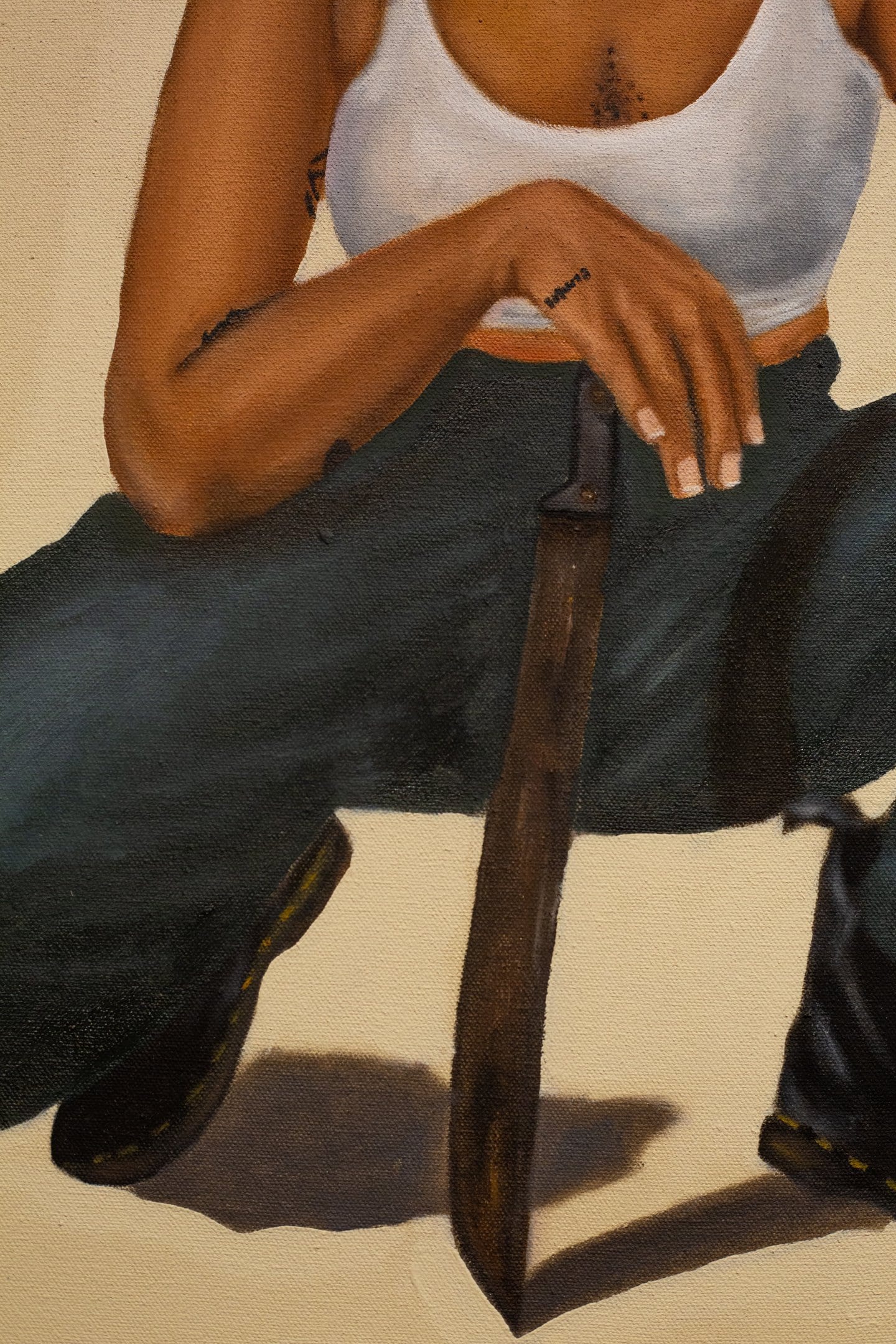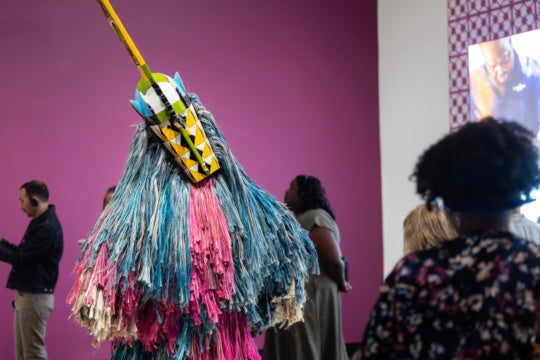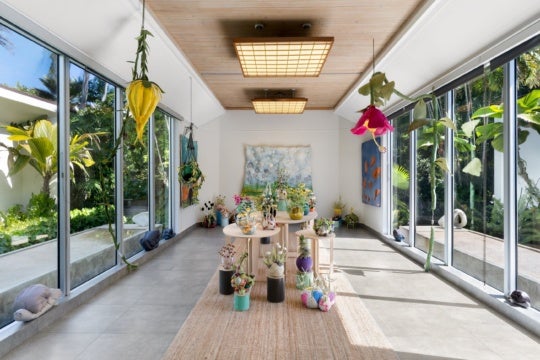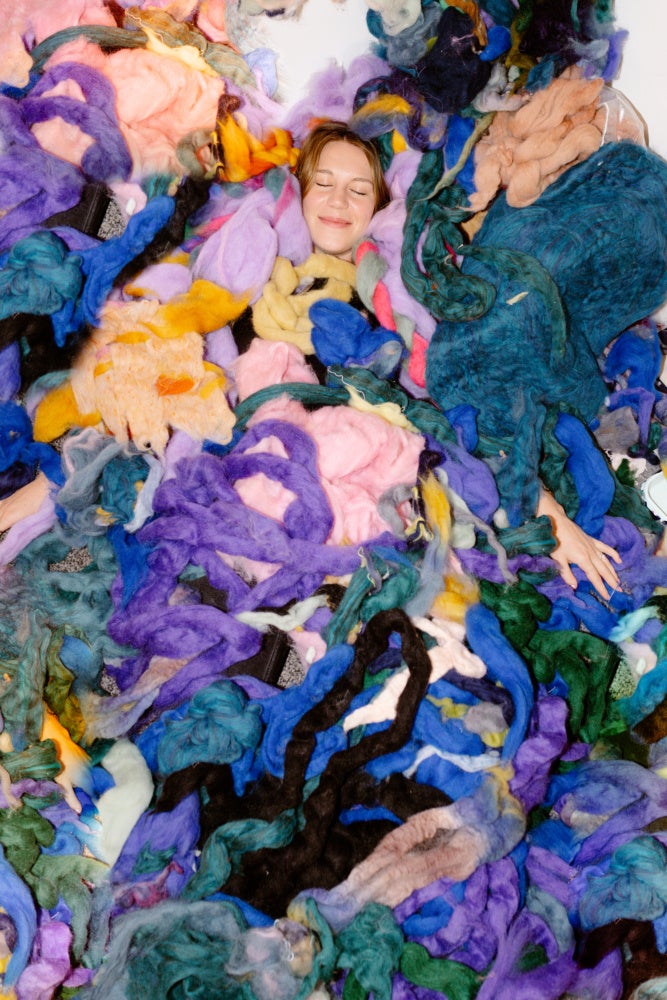
The studio of textile artist Liz Whalen is in West Atlanta, a neighborhood that housed textile mill workers from Massachusetts in the late nineteenth century1. Whalen’s work captivates viewers with a dance of color and texture and she was recognized as an emerging artist in the South by New American Paintings. Her spirited felts create sentimental longing and wonder by bringing contemporary life to a former utilitarian craft. Through our conversation, I hoped to uncover the wild and expansive world of felt, which Liz so fervently makes her own.
This interview was edited for length and clarity.
Elizabeth Withers: How do you start a piece? Can you walk us through your process?
Liz Whalen: Each piece is different. Sometimes I start by referencing an object such as my grandmother’s linen collection or old images. Sometimes I lay the wool down and I try to create interesting color combinations, so it just depends. With felting specifically, there’s two different methods: There’s wet felting and there’s dry felting. Wet felting is when you take wool, soap, and water and you agitate the fibers together to make the felt. There’s a few other processes that go into that.
The dry felting is when I take my needle felter and lay down the wool on top of a foam pad and punch them through the top shaft of the wool from the bottom. The needles pull the wool up and down, which dreads it from the bottom up, and that’s how the fibers created.
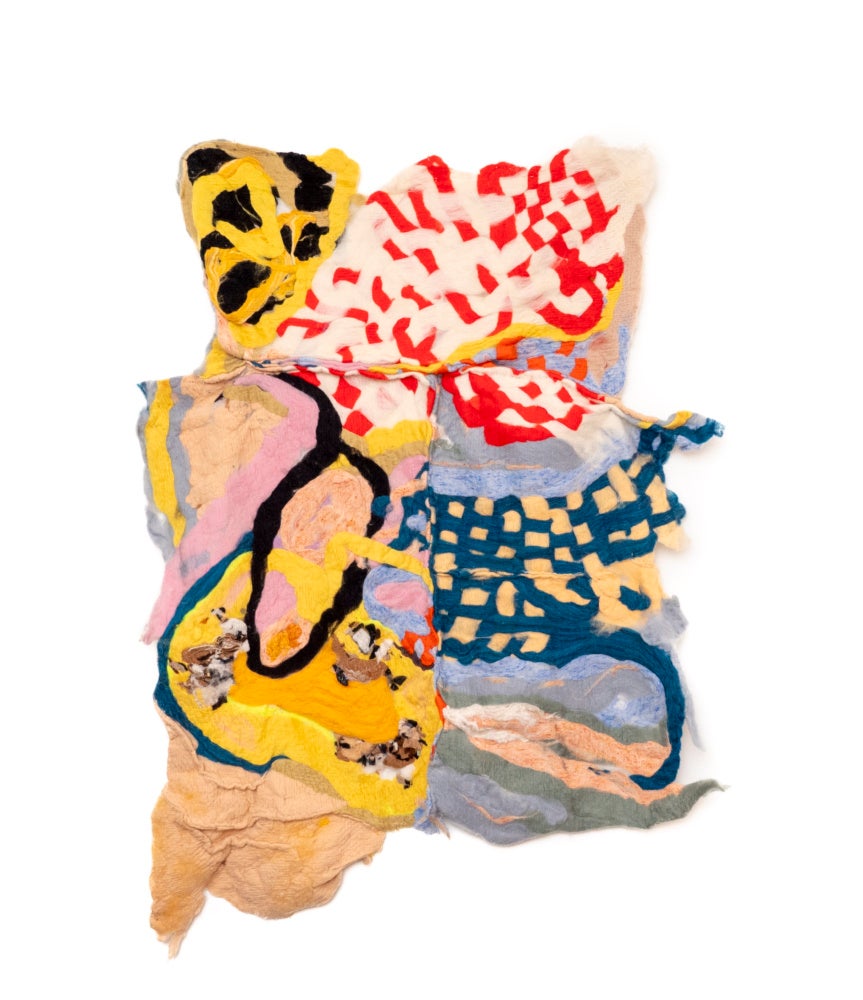
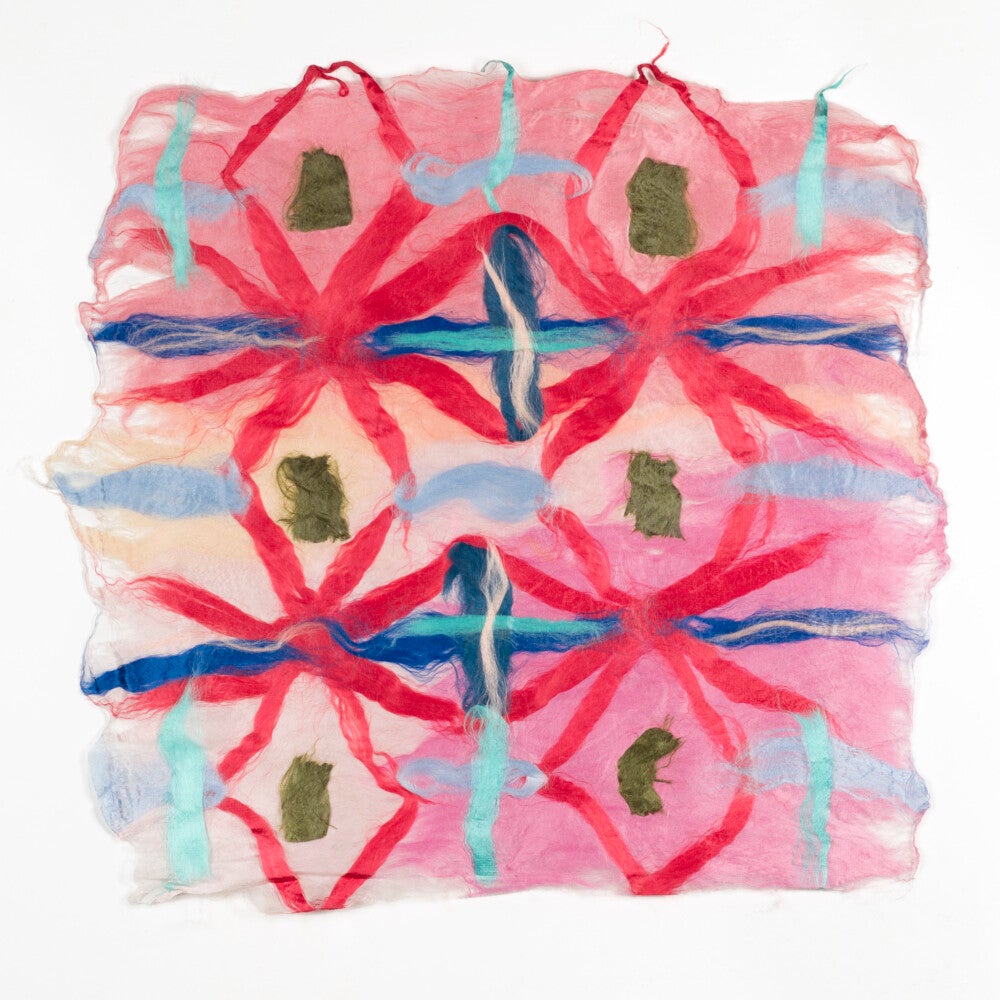
EW: That’s how you construct a piece?
LW: That’s how I create a base. I might even mix, and start a work by dry felting just to get some color down and see if I’m liking the composition and then wet felt on top. The main thing is: What am I looking at and what colors am I drawn to? And that’s how it begins.
EW: I find your great grandmother’s work in textiles so interesting. Do you think in some inherent way that has influenced you?
LW: Both of my great grandmothers made drapes for a living. One didn’t have a lot of support and she had to make drapes to feed her children. She made the governor’s mansion drapes in Atlanta. At the time that was a really big deal, her name is not mentioned in their record but the drapes are on their record.
They were both amazing, talented drape makers! My mom learned how to make drapes from one of them and made the drapes and bedding in our home. I grew up around a lot of textiles so I think naturally I was influenced by the materials and women who surrounded me. I think it influences me when I’m making felts, because I reference a lot of their linens and collected objects.
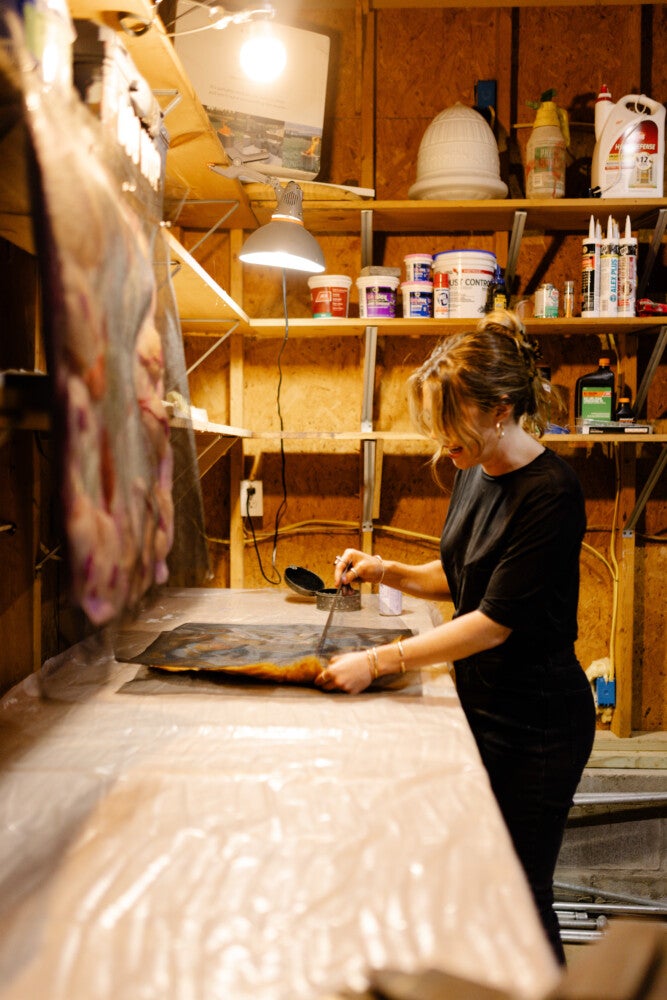
I think there is a bit of a longing for my great grandmothers. I never really knew them so I’m in a very emotional state when I’m making work and I’m using their objects, it’s as though I’m trying to make a connection with them or I try to have a conversation via textiles. It’s sad that I was never taught by them so I think it’s a way for me to make connections with these women. We both are making textiles for a living to support our families. It’s not expected of me to work in this medium, yet, it was expected of them to have that skill, that was one of the job options. So I see it as a privilege that I get to choose to make fiber art as a woman. I feel I’m honoring their legacy by continuing in the textile way of making.
EW: Is there a freedom you find in felt that you didn’t feel in other textile methods?
LW: Yes, I remember when I was learning to felt I was in a pre-intro class where I learned how to weave, crochet, and knit, etc. I just didn’t feel restricted when I learned how to felt. I just knew right away this is the textile for me. Because there was no long set up there was no complicated learning curve, it was so natural and innate.
With other textile methods there’s a warp and a weft, there’s specific knotting, several different ways that you have to do it to make the textile, and with felt, because there’s no grid system, I can approach making it any way I want. I don’t have to stay within the confines of a rectangle or within the confines of a system, I can make it a circle, I can make it have a hole in the middle. It can have a border, no border, it has so much flexibility. I think that’s what I liked about felt, I like to make work really fast and I think that it allows that as with the other methods though they are really fun they just take more time and my brain doesn’t work that way.
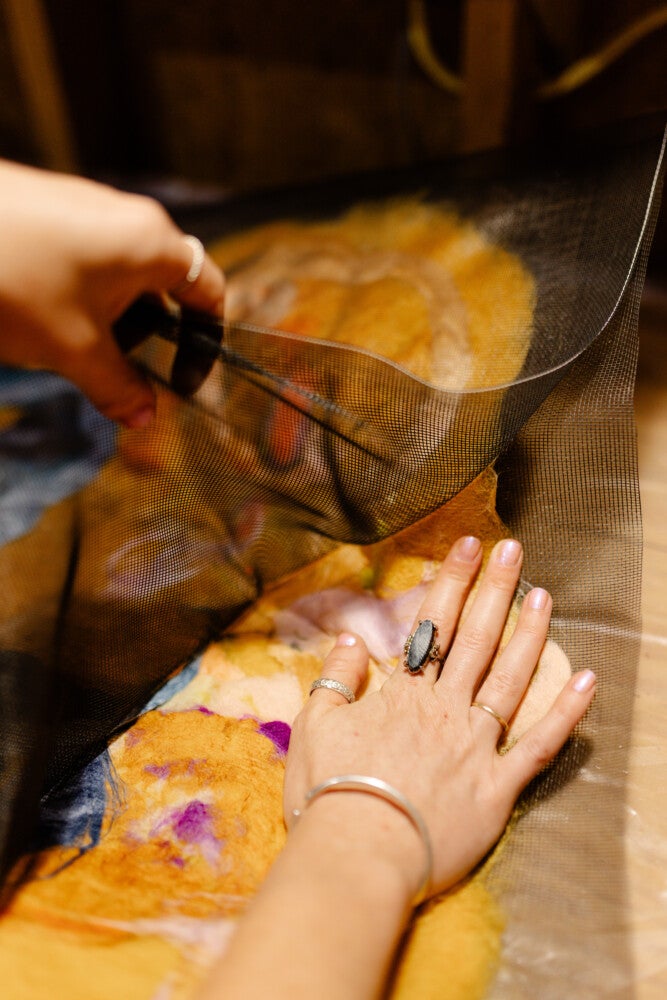
EW: Several artists reference their textiles as paintings, how do you feel?
LW: I think for myself I do not see my work as paintings. I come from a painting and printmaking background. However, I think that the felt has its own language that I’m more interested in developing that language than leaning on the language of painting to describe it.
If you’re looking at an object, let’s say another craft medium, such as ceramics, and an artist has painted an image on their ceramic vessel, you wouldn’t look at that vessel and say ‘That’s a painting!’ You would look at that vessel as a piece of ceramic work. So I think I feel the same way about the felts, it feels unnatural to call them paintings because even though I might have painterly gestures, or I might actually paint on the felt, it doesn’t make it a painting. To me, it becomes a robust piece of felt. So I think that I’m more interested in giving felt the spotlight it deserves as its own medium.
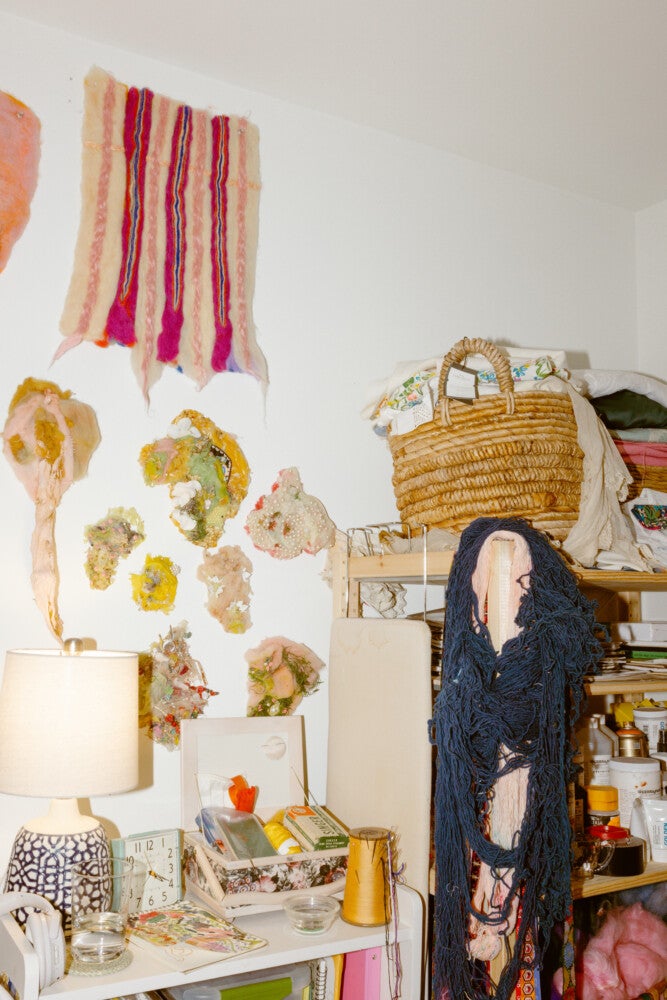
EW: I’ve heard you describe felting as the Wild West. I love that reference. Can you explain how this is uncharted territory for so many?
LW: First of all, felt is so old. It’s one of the only textiles that doesn’t have a nailed down history. Its history is semi mythological. No one can say exactly where it began but we do know that from stories, one way it was made was by people putting wool in their shoes before long travels and the agitation from their feet and the moisture from their body would create the wool into felt. It was used as a utilitarian object.
In Kyrgyzstan, for example, I got to travel there and see how wool was used and felt was made to become housing, carpets, and clothing. It’s incredible the weight that felt can hold. But it’s only been seen as a utilitarian object.
I think coming from an art standpoint, I’m making felt as if I’m making proper capital A art. It is an incredible new landscape, because felt has not been seen in this way before, from my knowledge. I’m able to approach it and push it. I put it under a lot of pressure. I’m always asking myself, ‘How much can the felt bare?’—whether that’s immense weight or being made to be paper thin to hold an almost airless quality. It’s really exciting because I haven’t seen felt be pushed in this way, but I do perceive that there is going to be a major felt wave in the art world. I’m excited to be a part of that and I’m excited to see how other artists take this medium and make it new and fresh.
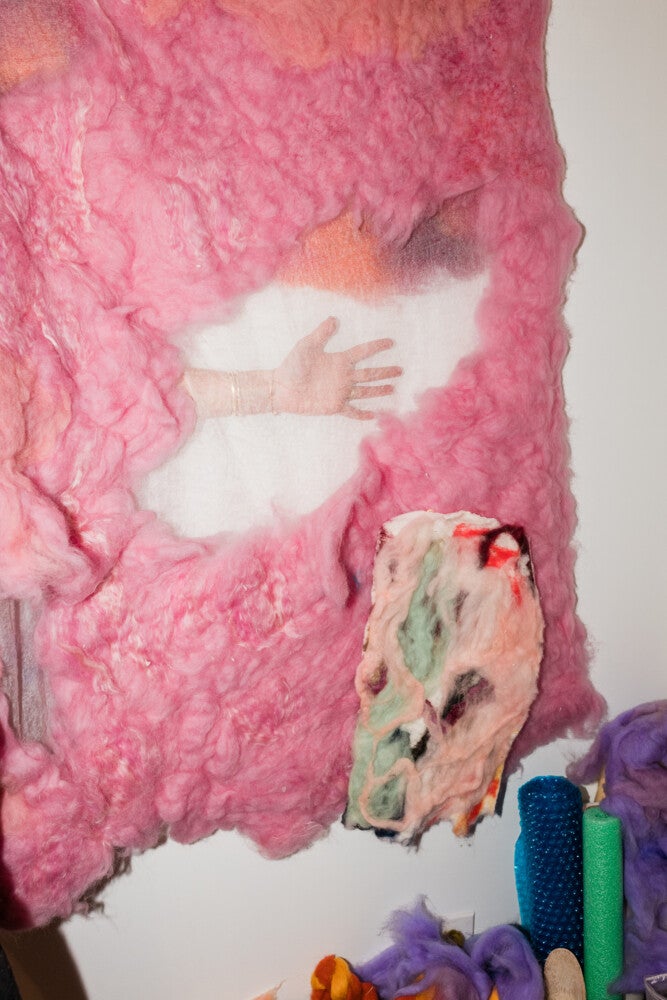
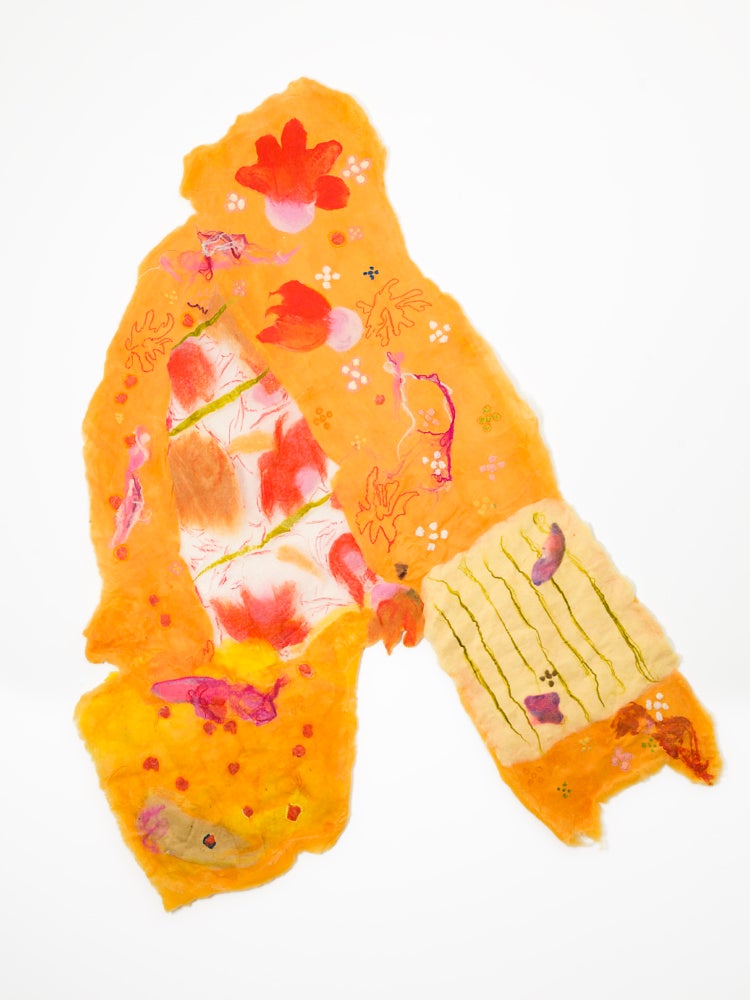
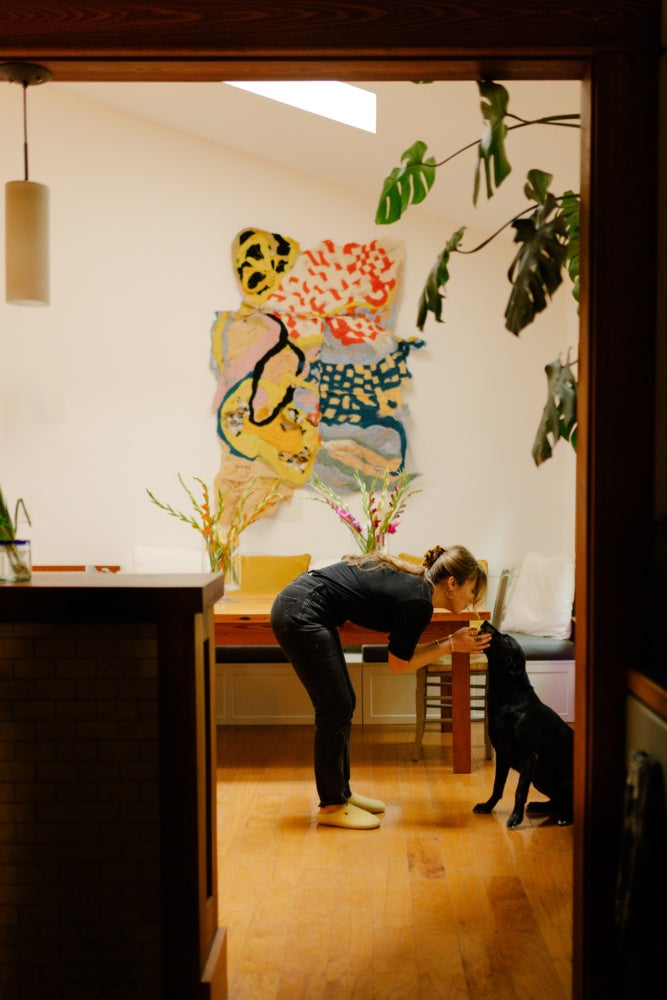
[1] Holly L. Anderson, Don Rooney and Laura C. Lieberman (July 23, 2001). “National Register of Historic Places Inventory/Nomination: Whittier Mills Historic District” Retrieved July 15, 2024.

